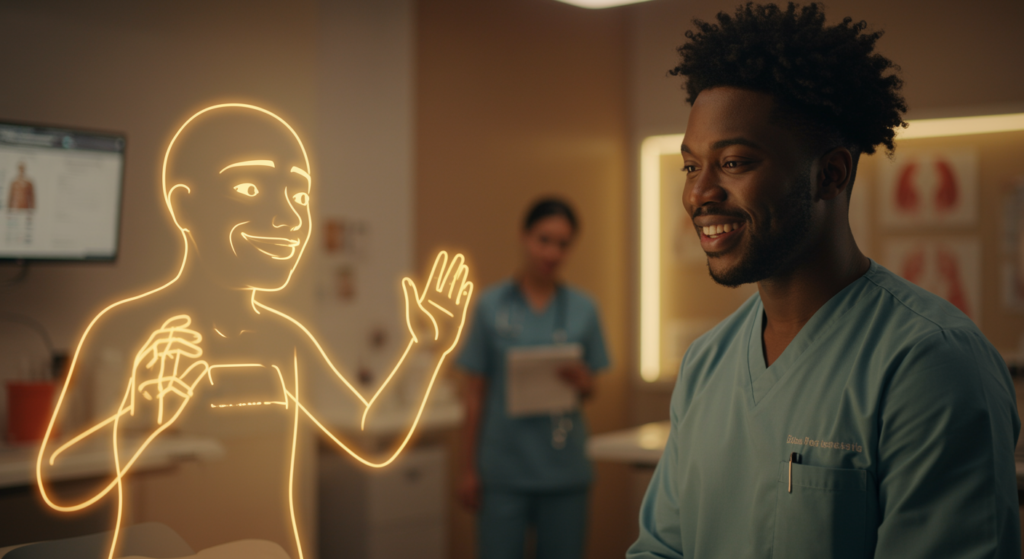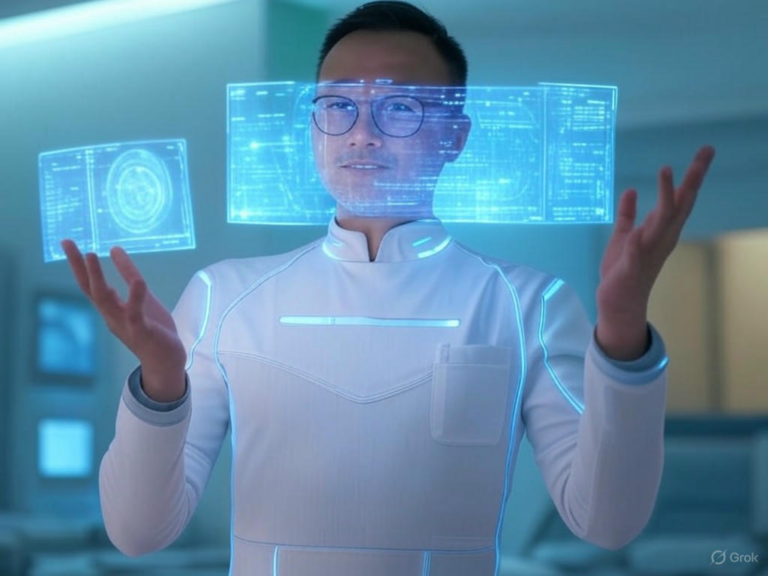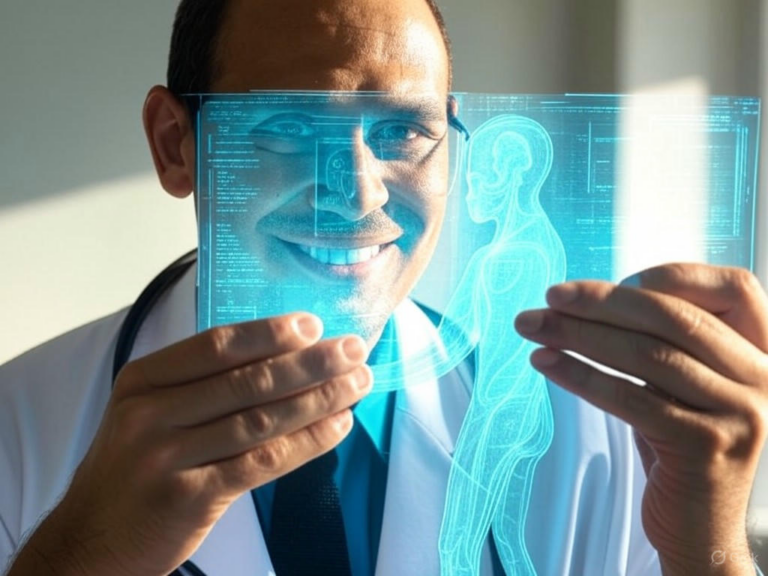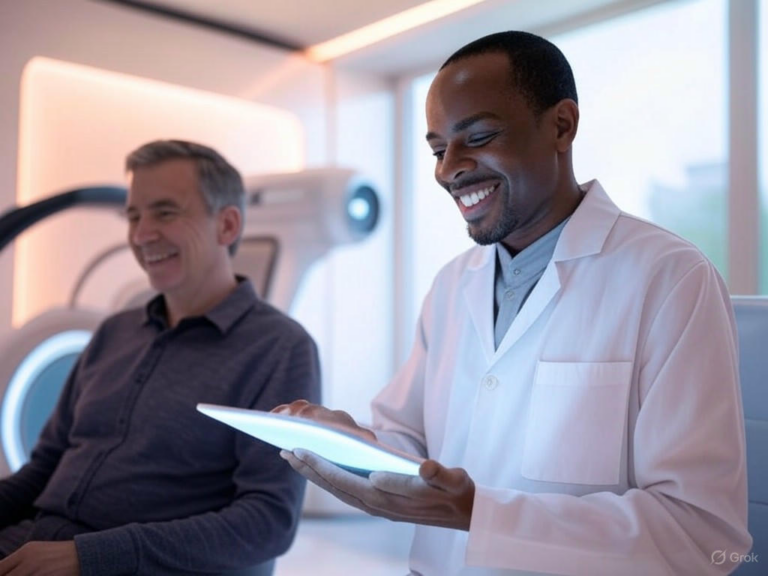
ChatGPT Outperforms Doctors in Bedside Manner
The AI Revolution in Patient Care: How ChatGPT is Enhancing AI Bedside Manner
In today’s evolving healthcare world, ChatGPT demonstrates superior empathy and quality in patient communication, outshining human doctors in ways that could transform how we interact with medical advice. Imagine a tool that never tires, always listens without judgment, and delivers clear, compassionate responses—it’s no longer science fiction. This shift isn’t about replacing physicians but about amplifying the human touch through technology, as recent studies show AI bedside manner stepping up where traditional care sometimes falls short.
Researchers from top institutions like the University of California, San Diego, and Johns Hopkins have put ChatGPT to the test against real doctors, comparing their answers to everyday medical queries. The results? A clear win for the AI in building rapport and trust, though not without its boundaries in complex diagnostics. As AI bedside manner gains traction, it prompts us to rethink how technology can support, not supplant, the expertise of medical professionals.
Superior Empathy: Where AI Bedside Manner Truly Shines
What makes ChatGPT stand out is its uncanny ability to demonstrate superior empathy, often leaving physicians in the dust when it comes to emotional connection. In one key study, experts preferred ChatGPT’s responses in 78.6% of cases, rating them 3.6 times higher for information quality and an impressive 9.8 times higher for empathy. Have you ever left a doctor’s appointment feeling unheard? This is where AI steps in, offering consistent, patient-centered dialogue that feels genuinely supportive.
Doctors face immense pressure, juggling tight schedules and heavy workloads, which can make it tough to prioritize that personal touch. ChatGPT, on the other hand, operates without fatigue, crafting responses that blend facts with kindness every time. This strength in AI bedside manner isn’t just impressive—it’s a game-changer for patients seeking reassurance during vulnerable moments, like explaining a diagnosis in simple, comforting terms.
Quality of Information: Making AI Bedside Manner More Accessible
Beyond empathy, ChatGPT excels at delivering high-quality information that’s easy to grasp, further proving its edge in AI bedside manner. Participants in the research found the AI’s explanations more comprehensive and user-friendly, especially for those without a medical background. Think about it: when you’re dealing with health issues, the last thing you need is confusing jargon—ChatGPT avoids that, breaking down complex topics into relatable insights.
This approach boosts patient understanding, which directly ties into better treatment adherence and overall outcomes. For instance, the study highlighted how ChatGPT keeps cognitive load low, helping people absorb information without feeling overwhelmed. By focusing on clear, empathetic communication, AI bedside manner is paving the way for more engaged and informed patients in everyday healthcare scenarios.
Why ChatGPT Leads in AI Bedside Manner Techniques
Several reasons explain why ChatGPT demonstrates superior empathy and quality so effectively:
- Consistency: It delivers top-notch responses around the clock, free from human errors like exhaustion or distraction.
- Detailed yet simple explanations: Unlike rushed consultations, ChatGPT provides thorough answers tailored to the user.
- Empathetic phrasing: It uses warm, non-judgmental language that encourages open questions about sensitive topics.
- Accessibility: Always adapting to the user’s level, it makes AI bedside manner feel personal and approachable.
Have you considered how this could change routine check-ups? For example, a patient might use ChatGPT to clarify post-appointment details, easing anxiety and improving follow-through.
Diagnostic Limitations: Balancing AI Bedside Manner with Human Expertise
While ChatGPT shines in communication, it falls short in diagnostics, reminding us that AI bedside manner is just one piece of the puzzle. Physicians boast a 98.3% accuracy rate in emergency settings for top differential diagnoses, far surpassing earlier AI models at 83.3%. In a 2024 study, ChatGPT only nailed correct answers in 49% of complex cases, underscoring its current weaknesses.
This gap highlights the irreplaceable role of human judgment, especially when dealing with incomplete or nuanced patient data. Still, when given detailed clinical info, ChatGPT’s accuracy jumps to 90-97%, showing potential for growth. It’s a stark contrast that keeps AI bedside manner in a supporting role rather than the lead.
The Diagnostic Gap in AI Bedside Manner Evolution
The differences become clearer based on available data:
- With full clinical details, ChatGPT demonstrates superior empathy and quality at near-physician levels for diagnostics.
- But rely on patient symptoms alone, and its accuracy drops to about 50% for top diagnoses.
- This reliance on quality input means AI bedside manner needs human oversight to truly thrive.
So, what does this mean for you? It could mean safer AI tools that handle empathy while doctors tackle the tough calls.
The Complementary Future: Merging AI Bedside Manner with Physician Skills
The real opportunity lies in blending AI bedside manner with human expertise for a more holistic healthcare experience. ChatGPT itself admits it can’t replace doctors, emphasizing a partnership that leverages its strengths in empathy and detail. Picture this: AI gathering initial concerns before an appointment, freeing doctors to focus on critical decisions.
From pre-visit prep to post-care follow-ups, applications abound. For mental health, AI’s empathetic style could offer support between sessions, making therapy more accessible. This collaboration isn’t about competition—it’s about enhancing patient care through combined forces.
Practical Uses of AI Bedside Manner in Daily Healthcare
Here are some actionable ways to integrate this technology:
- Streamline pre-appointment talks to cover basics efficiently.
- Reinforce doctor instructions with clear, customized recaps.
- Create tailored educational content based on individual needs.
- Provide ongoing emotional support for chronic conditions.
If you’re in healthcare, how might you start experimenting with these tools? It’s about making patient interactions smoother and more effective.
Public Perception and Building Trust in AI Bedside Manner
Despite the positives, many people feel uneasy about AI in healthcare, with surveys showing discomfort around tools like ChatGPT. This hesitation stems from fears of privacy breaches, errors, or losing that essential human connection. Yet, as AI bedside manner proves its value, addressing these concerns head-on can build confidence.
To foster trust, systems must be transparent about AI use and its limits. For example, always pairing AI advice with a recommendation for professional consultation can ease worries. What are your thoughts—would clear guidelines make you more open to this tech?
Strategies to Strengthen Trust in AI Bedside Manner
Key steps include:
- Being upfront about AI involvement in care.
- Emphasizing human oversight in all processes.
- Ensuring diverse testing for reliable performance.
- Prioritizing robust data security.
The Risks of Relying on AI Bedside Manner
While beneficial, over-relying on ChatGPT carries risks, like fostering misconceptions if information isn’t spot-on. Studies note false positives or negatives at around 13%, which could mislead patients without proper checks. This is why AI bedside manner must come with strong safeguards.
To mitigate these issues, include clear disclaimers and always direct users to seek expert advice. Imagine using AI as a helpful guide, not a standalone solution—it keeps things safe and effective.
Minimizing Risks in AI Bedside Manner Implementation
Effective strategies involve:
- Adding prominent warnings about limitations.
- Encouraging follow-up with healthcare pros.
- Having experts review AI outputs.
- Building systems for ongoing improvements.
Implications for Medical Training and AI Bedside Manner
As AI continues to demonstrate superior empathy, medical training needs to adapt. Programs should emphasize interpersonal skills to ensure doctors match or exceed AI in communication. Plus, future professionals will need to learn how to collaborate with these tools seamlessly.
This evolution could mean more balanced care, where AI handles routine empathy and doctors provide the depth of experience. For aspiring medics, it’s an exciting shift—how will you prepare for it?
Conclusion: Embracing a New Era with AI Bedside Manner
In summary, ChatGPT’s ability to demonstrate superior empathy and quality marks a pivotal step toward better patient communication, but it’s the partnership with human doctors that will drive real progress. By combining AI’s strengths with physicians’ expertise, we can create a healthcare system that’s more compassionate and efficient.
As we move forward, let’s focus on thoughtful integration that prioritizes patient well-being. What do you think about this blend of tech and humanity? Share your experiences in the comments, explore more on AI in healthcare through our related posts, or spread the word to spark discussion—your input could shape the future.
References
1. NCBI Research News. “ChatGPT and Medical Communication.” Source
2. JAMA Network. “AI in Patient Responses.” Source
3. Business Insider. “ChatGPT’s Empathy in Healthcare.” Source
4. Psychology Today. “AI Outperforms Physicians.” Source
5. JMIR Publications. “Diagnostic Accuracy Study.” Source
6. New Atlas. “ChatGPT in Medical Diagnosis.” Source
7. YouTube Video. “AI in Healthcare Discussion.” Source
8. YouTube Video. “Further Insights on AI.” Source
AI bedside manner, ChatGPT medical responses, doctor-patient communication, healthcare AI, ChatGPT vs physicians, AI empathy in medicine, patient communication quality, AI in healthcare, medical AI limitations, empathetic AI tools







